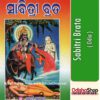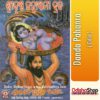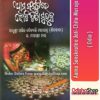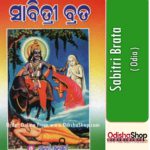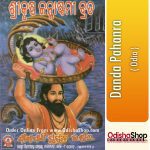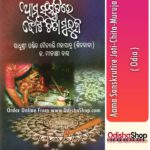Araksita Das is an odia saint-poet, was born in B.K. Raj family. His real name was Balabhadra Deva. Like Buddha he developed a detached attitude towards the luxurious life and left the palace in quest of truth and self-realisation. Not witnessing any divinity in the so-called man-installed god, (like Dayananda Sarasvati), he propagated his faith against idolatry. Realising the pointlessness of the baneful caste-system, he began to take food from the neglected down-trodden, low-class people irrespective of caste, creed and religion.
After 18 years of travel and practice of penance, he settled down in the cave of Olasuni hill which has become a holy place for his disciples after his death. Like an ‘Abadhuta’ (one who is free from bondage) he was nirbikara (unaffected). He realised God everywhere; in the words of Bhagavad Gita, he was a Samadarsin (one who had equal vision). He has advocated the worship of the omnipresent Nirakara Brahma (Brahma who is formless).
In the true sense of thhe term he was a real saint like the Panchasakhas (five associates) in odia literature.The essence of odisha’s religious culture is the path of Bhakti which has been reflected in the works of the spiritual exponents and saint-poets of odisha.
Araksita has expressed the doctrine of Pinda-Brahmanda (body,the same as universe) and Jnana Bhakti (Devotion by knowledge). In religious doctrine he was more akin to the great Achyutananda Dasa, author of Sunya Samhita (Text on the Void). He was well versed in Srimad Bhagavata and other major puranas (mythology). Though he built up the doctrine of his religious faith on the basis of odisha’s rich tradition, he was quite independent in spirit
The tenets of his religious experience have been expressed in his works namely ‘Mahimandala Gita
(Poem of the Universe) and Bhakti Tika (commentary on devotion) in a very simple language and lucid style. In his Mahimandala Gita he has depicted the mystery of the universe and human body and their similarity in the form of a dialogue between Mana (mind) and Chaitanya (consciousness) as well as the glory of Nama (name of Nirakara Brahma), the traditional guru vandana (worship of Guru), devotion, equal vision and tolerance alongwith his reformative attitude towards untouchability. He is more a religious teacher than a poet.
Araksita and Bhima Bhoi (saint poet of the Mahima Dharma) stand on an equal footing in relation to
religious experience. Both of them have advocated against idolatry and untouchability like the Brahmo reformists of Bengal viz. Ramamohan Ray and Kesabchandra Sen. BIBLIOGRAPHY: Mrityunjaya Ratha, Araksita O Mahimandala Gita (Cuttack, 1327), Mayadhara Mansimha, Odia Sahityara Itihasa (Cuttack, 1967).
Odia Books By Araksita Das
Abadhuta
Bhagavad Gita
Samadarsin
Nirakara Brahma
Mahimandala Gita
Bhakti Tika

